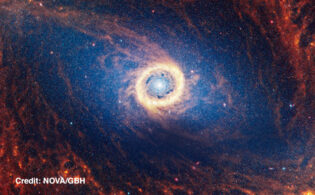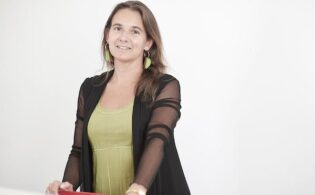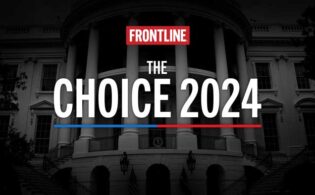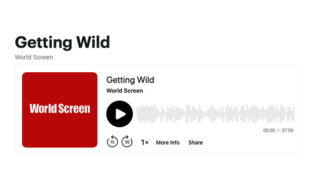ORF-Enterprise’s Armin Luttenberger, Terra Mater Studios’ Berend Dreier and PBS Distribution’s Joe Barrett discussed trends in wildlife distribution at the TV Real Festival.
The Getting Wild session, available on-demand here, featured Luttenberger, head of content sales international at ORF-Enterprise; Dreier, director of co-productions and sales at Terra Mater Studios; and Barrett, VP of global sales at PBS Distribution, in conversation with TV Real’s Jamie Stalcup.
“Nature and wildlife feels very strong at the moment,” Dreier said. “There is a strong trend for escapism. People just don’t want to be bothered with the many problems that we face, while at the same time still wanting to know about them and be educated and make a difference, especially when it comes to environmental issues, conservation issues and so on.”
Stalcup asked how the wildlife distribution business has been impacted by the emergence of FAST channels. For ORF-Enterprise, the experience has been “mixed,” Luttenberger said. “FAST doesn’t follow the same logic in all of the markets. It does not work equally well in all markets worldwide. Territories with very strong linear, free-to-air products may struggle economically to have the same success with FAST products. FAST can be an exciting addition from a distributor’s perspective as an additional channel for us. But in my opinion, the same programmatic rules apply to FAST as they do with handmade linear television. From this perspective, I do not really yet see a compelling impact on the genre itself.”
FAST has been an exciting development for Terra Mater Studios, Dreier said, referencing the company’s partnership with Autentic for the Terra Mater WILD channel in German-speaking countries. “The data we get there from viewer retention to ad sales, inventory sales and so on is really great. The natural history audience feels built-in with FAST channels, especially in our home turf territory. It’s also good that we have this huge back catalog. And all our content is at least HD; most of it is 4K already. It really caters to that audience who just wants to have that lean-back experience and watch beautiful nature on their devices. It’s also a really helpful extension of the life cycle of natural-history content.”
Terra Mater has also found success on YouTube. “We have roughly 450,000 subscribers now, so it’s growing steadily,” Dreier said. “Producing content for that audience works really well. We published a video about the largest beaver dam on Earth and already have more than 2.3 million views. We want to try it to see how the long-form, 50-minute documentaries or even longer work there and understand the algorithm a little better.”
Barrett added, “FAST has allowed a much broader audience to view nature documentaries because they’re largely censor-friendly. Typically, they’re family-friendly. So, you broaden your audience. A lot of the FAST channels are becoming pickier but they do need content. It’s been a wonderful platform for nature to be rereleased.”
Technological developments have been key to driving the genre forward over the last few years, the panelists noted.
“Cameras are being produced in 4K and now 8K resolution and even higher and getting even smaller to capture the natural world in all its beauty and glory,” Dreier said. “With drones, for example, you can now achieve shots for a more reasonable price than when you needed helicopters. Remote cameras and camera traps also help to really get the viewer into the scene and experience elusive animals, elusive scenes like never before. The downside of that is that you get a lot of footage. I hope that AI will help tremendously with the archiving and tagging and making this content more available for future exploitation.”
Luttenberger added, “I’m convinced that storytelling and craftsmanship are crucial to the nature film genre. Technological progress has certainly led to increased efficiency on one hand. You don’t need a helicopter; you can use the drone. And then also enabled new perspectives to wildlife. On the other hand, it doesn’t always get cheaper because it’s resulting in higher standards. Also, it increased costs, and [with] well-made blue-chip documentaries, the factors of time and human resources, going through the entire material, being on location, should not be underestimated. Despite all the technological progress, the success of wildlife documentaries rises and falls with creative execution and substance.”
The panel then moved to the issue of funding. ORF-Enterprise boards projects very early, Luttenberger said. “We’re particularly involved in almost all of the projects of our flagship program, ORF UNIVERSUM, from the very beginning or a very early stage. Our entire team really values the highly professional collaboration with the colleagues in the editorial department, with all the independent producers that we’re working with, simply because the brand and the programs that are coming out of that slate are a pillar of our portfolio. We support it directly through financial contributions, but also by offering and seeking new co-production partners from around the globe. Co-production is necessary because well-made nature and wildlife programming is expensive.”
Financing is taking longer today, Dreier added. “You also have to be more creative and collaborative in order to get productions off the ground. We like to come in from the beginning. We want to make it a Terra Mater production or co-production from the beginning and try to steer it in a direction where everybody is super happy with the outcome, even if it sometimes means different versions in order to take in all the partners’ needs, which then, of course, adds a little bit to the cost.”
Co-pros are also key at PBS, Barrett said. “It’s important to be able to have that gap funding piece in place and assist in the co-production funding to get the film across the line. It benefits everybody. And when all the partners are involved right from the beginning, everyone has skin in the game. It’s a slightly different dynamic than a straight acquisition, which we also do.”
For nature and wildlife docs to resonate globally, Barrett pointed to the importance of audiences having an emotional connection to the subject matter.
Luttenberger added, “It’s crucial to make the audience realize that we are sharing our home on this only planet that we have. Being as clear as possible on this message will also help connect audiences to our nature and wildlife stories because a place might be far away from my home, but actually, it’s on the same ball in the universe.”
Dreier said it also helps to have a theme that resonates globally, like sustainability. “But also, the classical topics of a natural history documentary, whether it’s an animal family that is fighting for survival or a predator and prey.”
Delivering something viewers haven’t seen before is also paramount, Barrett said. “Having that revelation is important.”
Dreier is hopeful that commissioners will be open to taking more risks and is looking forward to new forms of creative and commercial collaboration to get shows made. “Financing is getting more and more difficult. We need to be more creative in how we work together and in the rights that we share in order to get the productions out there.”
“We can all be a little braver when it comes to presenting more challenging products,” Luttenberger added.
“Being challenged and confronted is important,” Barrett said. “Rather than [just] being confronted with an issue, I would like to see elements of, What’s a solution? Not just doom and gloom. What would offer hope to the audience?”
 TVREAL
TVREAL






